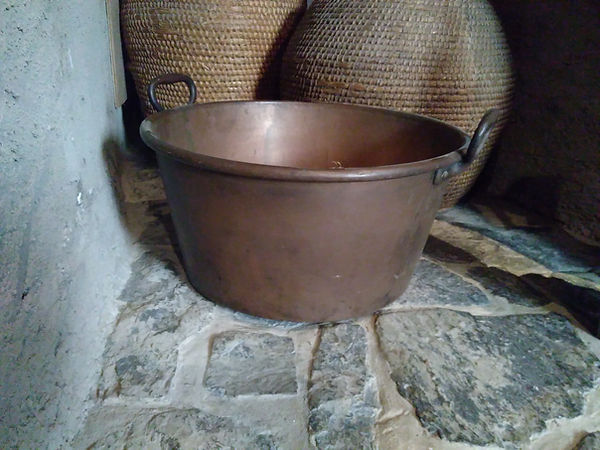
medieval kitchen

This kitchen was installed in the 12th century in between the old hall, the chapel and the outer wall of the castle - thus explaining the irregular plan of the place.
In later times a second storey was build on top, forming an appartment (for the kitchen personnel?), which was accessible via a wooden staircase from here.
This "old" kitchen was put in place to provide food to the court of the counts of Vianden, residing first in the old hall, then in the so called "small palace" (knight's study, Armoury, Gallery).
With the construction of the so called "large palace" (great hall) and the "new" main kitchen, this place lost it's purpose. It was nevertheless still in use as a kitchen until the end of the 17th century; probably to provide the garrison with food.
In the 14th century a third kitchen (the Julich kitchen) was installed, probably for the needs of the castle administration. Nowadays nothing can be seen anymore of this one.
So there have been three different kitchens inside the main block of the castle, covering (with their dependencies) more than 400 square metres!
food stores

the construction of the outer wall of the castle (on arcades to protect from sapping) made it possible to insert "niches" inside the thick masonry. These were mainly used as food stores, the one on the left was also used as scullery while on the very right a door leeds to a shaft in which a lift was installed to get up fire logs and other materials for the need of the kitchen.
fireplace

In the 12th century cooking took place over an open fire lit on the floor (beneath the chimney). Note that the level of the fireplace is the original height of the floor of the whole room. While the fireplace was covered in stone the floor of the rest of the room was made of timber. Later this was changed (and the floor level lowered?) and the floor covered with grey sandstone (nowadays slate).
hand mill


Grain would be stored at the castle and ground as needed in the ban mill near the river, or in times of danger with a small hand mill (on display: reproduction). In the late 12th / early 13th century a big treadmill replaced the handmill, this again to be replaced by the 14th century with a larger hand mill. In the 17th century 2 handmills were in use; one of the millstones can still be seen on the floor in the passage from the knight's study to the lower chapel.














